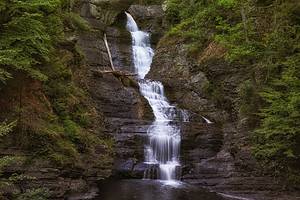Louisiana is home to an incredible diversity of animals and plants. This unique state was largely formed by sediment that washed down the Mississippi River. As a result of its origins, Louisiana has enormous deltas, swamps, and coastal marshes. In fact, Louisiana is home to the Atchafalaya Basin, the largest swamp in the United States. Louisiana also has the second most rainfall of any U.S. state, behind only Hawaii. Given that it’s the second wettest state in the country, how tall might the tallest waterfall in Louisiana be? This article explores the tallest waterfall in Louisiana, how to visit it, and some wildlife that lives nearby.
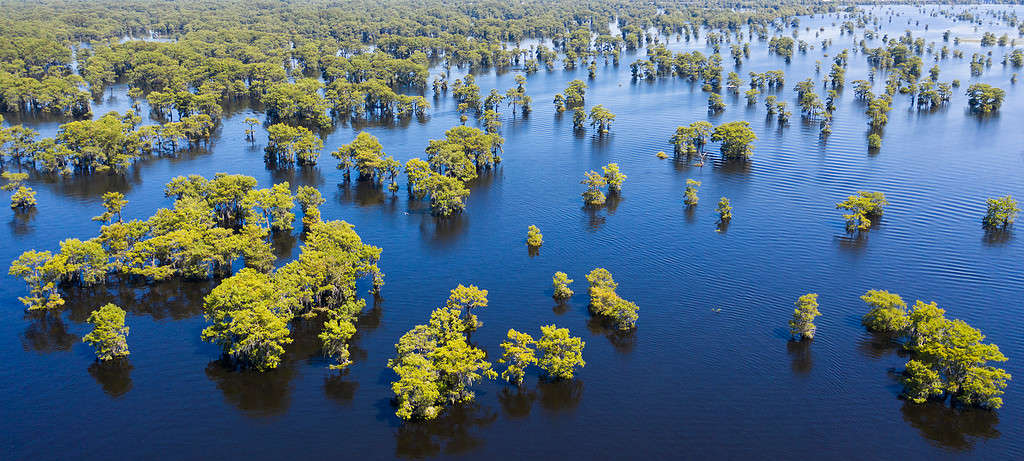
The majestic Atchafalaya Basin of Louisiana is the largest swamp in the United States.
©Sasha Craig/Shutterstock.com
First, let’s briefly explore a notable waterfall in the one and only state wetter than Louisiana. The tallest waterfall in the United States is in Hawaii, the wettest state by rainfall measurements. Olo’upena Falls, located on the island of Molokai, measures a jaw-dropping 2,953 feet. If the wettest state in America is home to such a tall waterfall, will the tallest waterfall in Louisiana measure up? The answer may come as a surprise.
The Tallest Waterfall in Louisiana
Although Louisiana is an incredibly wet state with an abundance of rivers and swamps, it largely lacks elevation change. The state is primarily lowlands, except for a few small mountains in the northwest region. However, it is actually in the lowlands of the northeastern region that you will find the state’s tallest waterfall. The tallest waterfall in Louisiana is the 17-foot tall Rock Falls, which runs on Big Creek in the J.C. “Sonny” Gilbert Wildlife Management Area (WMA).
The J.C. “Sonny” Gilbert WMA, owned by the Louisiana Department of Wildlife and Fisheries (LDWF), is a 7,524-acre wildlife management area. The area is located six miles west of the town of Sicily Island, in the Catahoula Parish. The LDWF acquired 6,180 acres of the area in 1980 and purchased the remaining 1,345 acres between 1984 and 2002. Some popular activities in the J.C. “Sonny” Gilbert WMA are hiking, horseback riding, ATV riding, hunting, and berry-picking. The terrain is rugged, with rolling hills and steep ridges dropping into creek bottoms.
Visiting The Tallest Waterfall In Louisiana
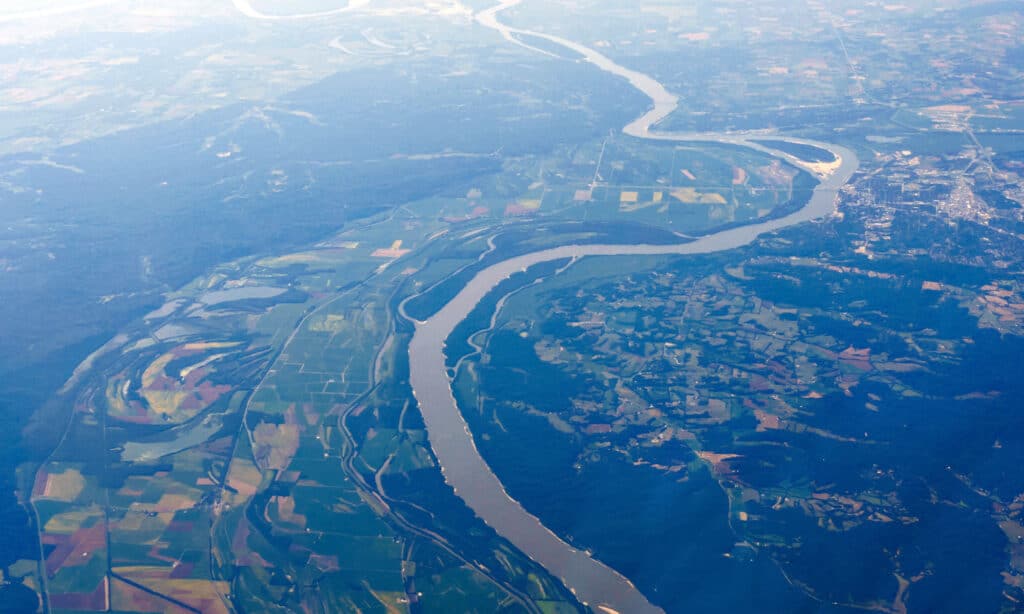
Sediment running down the Mississippi River formed the land of Louisiana.
©RaksyBH/Shutterstock.com
Where is Rock Falls Located on a Map?
The J.C. “Sonny” Gilbert WMA is located in the Catahoula Parish of Louisiana, six miles west of Sicily Island. Several state highways provide access to the area. Louisiana Highway 8 runs along the southern end of the WMA, leading to Sicily Island. Additionally, the LA 913, LA 914, and LA 915 state highways all provide access to the area. To legally access the J.C. “Sonny” Gilbert WMA or other Louisiana Department of Wildlife and Fisheries lands, visitors without a Louisiana fishing or hunting license must have a Wild Louisiana Stamp.
Getting to the Falls
The easiest way to access Rock Falls is via the Rock Falls Trail, a 0.7-mile loop trail. The Rock Falls Trail is in the southern part of the J.C. “Sonny” Gilbert WMA. According to AllTrails, the hike is considered easy and takes an average of 22 minutes to complete. Rock Falls Trail involves a mild elevation gain of 147 feet. Although the Rock Falls Trail is an easy one, the J.C. “Sonny” Gilbert WMA overall has extremely rugged terrain. If you plan to venture out to different trails in the WMA, be sure to prepare for this more challenging terrain. The best time to visit the falls is after rainfall, when the creek will be flowing with plenty of water.
Climate and Weather Conditions
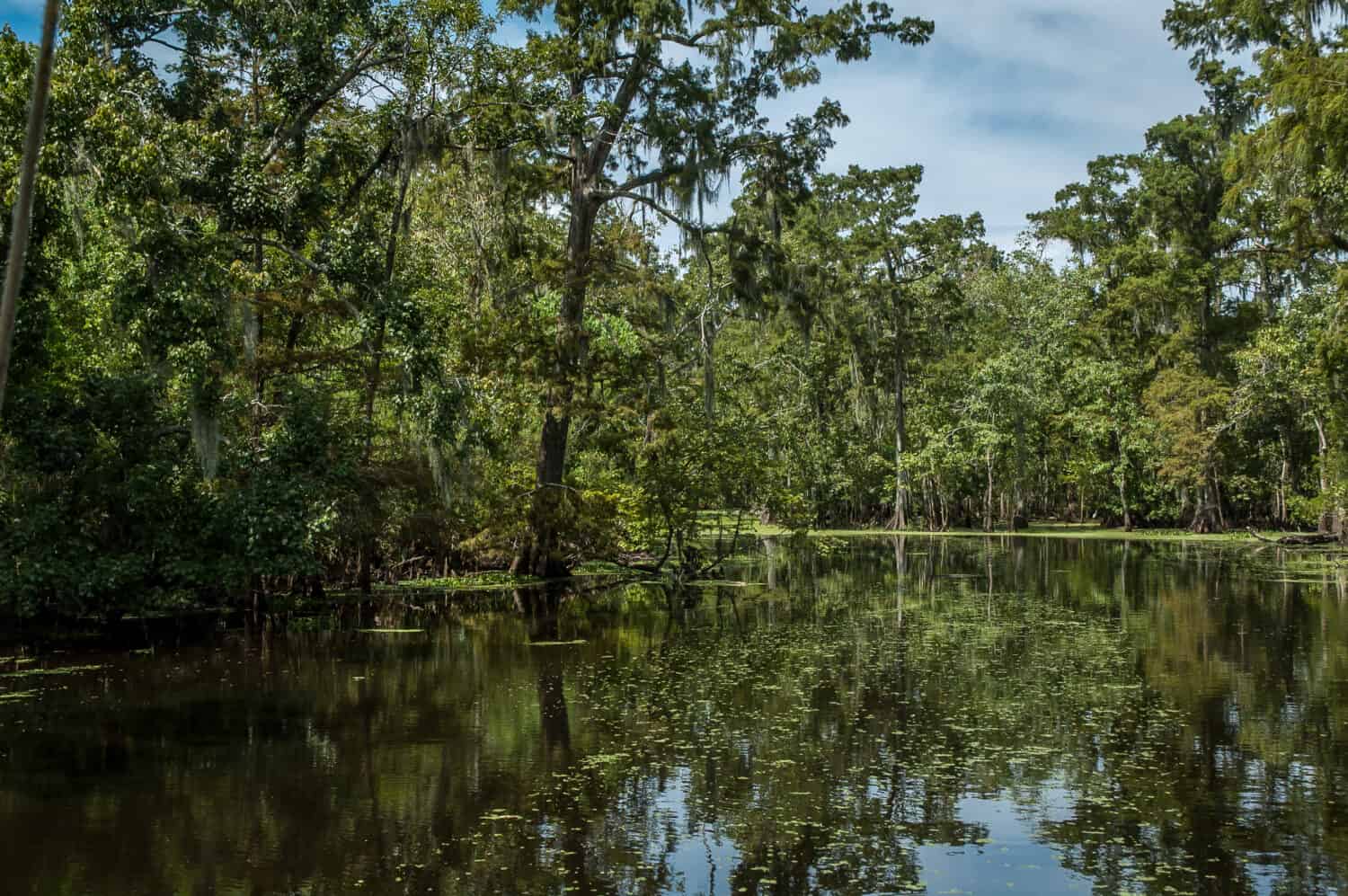
Be prepared for hot and humid conditions when visiting Louisiana.
©NunoGplus/Shutterstock.com
Louisiana is known for extreme heat and humidity, and it’s important to be aware of these conditions when visiting Rock Falls. July and August are the hottest months of the year, each with an average high of 91°F. In Louisiana’s semi-tropical climate, even the hottest months of the year can see rain. The months of July and August see 3.2 and 2.9 inches of rain, respectively. However, the time of year with the most rainfall is November through April. When visiting Rock Falls, be sure to check the forecast for extreme heat or rain. Prepare for the hot and humid conditions by bringing water, loose-fitting clothing, and sun protection (a hat, sunglasses, sunscreen). Additionally, humid places are typically home to insects, and Louisiana is no exception. Pack anything you need to protect yourself from bites and stings, whether it’s proper clothing or insect repellent.
Wildlife Around Rock Falls
The J.C. “Sonny” Gilbert WMA is known for an incredible diversity of wildlife, including some rare and endangered species. Louisiana black bears are common, with increasing sightings in the area. Bald eagles use the WMA to nest in the winter, and can also be seen there. The WMA is a popular place for hunting, with game species including white-tailed deer and wild turkey. Other species available for hunting in the area are woodcock, rabbit, and raccoon. Here is more information about a few of the many animals that make their homes in the J.C. “Sonny” Gilbert WMA.
Louisiana Black Bear (Ursus mericanus luteolus)
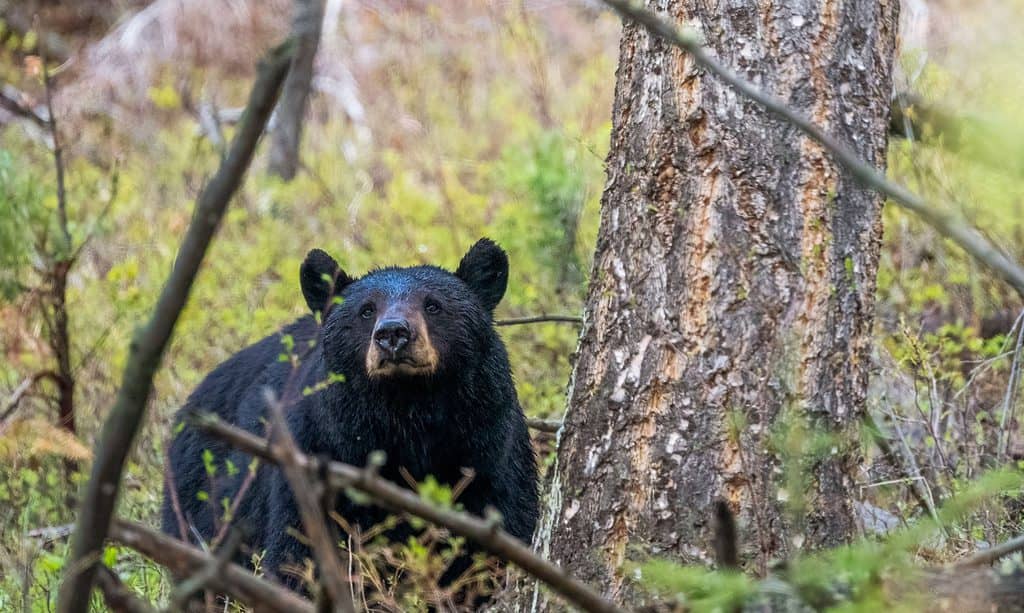
The Louisiana black bear population is increasing due to conservation efforts.
©iStock.com/Wirestock
The Louisiana black bear is a subspecies of the North American black bear. The North American black bear is the most common bear species in the United States. Although the early habitat of black bears is the majority of North American forests, today their range is much smaller. As a result of habitat loss, the Louisiana black bear was classified as “threatened” by the International Union for Conservation of Nature (IUCN) between 1992 and 2016. Due to numerous programs and initiatives in Louisiana, over 600,000 acres of forest have been conserved and restored in the state. As of today, there are 700 to 1,000 black bears in Louisiana, with the number growing as habitat is restored. Be sure to brush up on bear safety before visiting Rock Falls, the tallest waterfall in Louisiana.
Bald Eagle (Haliaeetus leucocephalus)

With outstretched wings and a twig in its beak, a bald eagle lands on a large nest.
©iStock.com/June Jacobsen
The bald eagle is the national bird of the United States. An endangered species for nearly thirty years, from 1967 to 1995, the bald eagle has a long history of conservation. In Louisiana, conservationists are working to preserve the habitat of these iconic birds. Bald eagles are winter visitors to the state of Louisiana, migrating to the state for the nesting season. Eagles nest in the winter months, which is when visitors are most likely to see them at J.C. “Sonny” Gilbert WMA.
White-tailed Deer (Odocoileus virginianus)
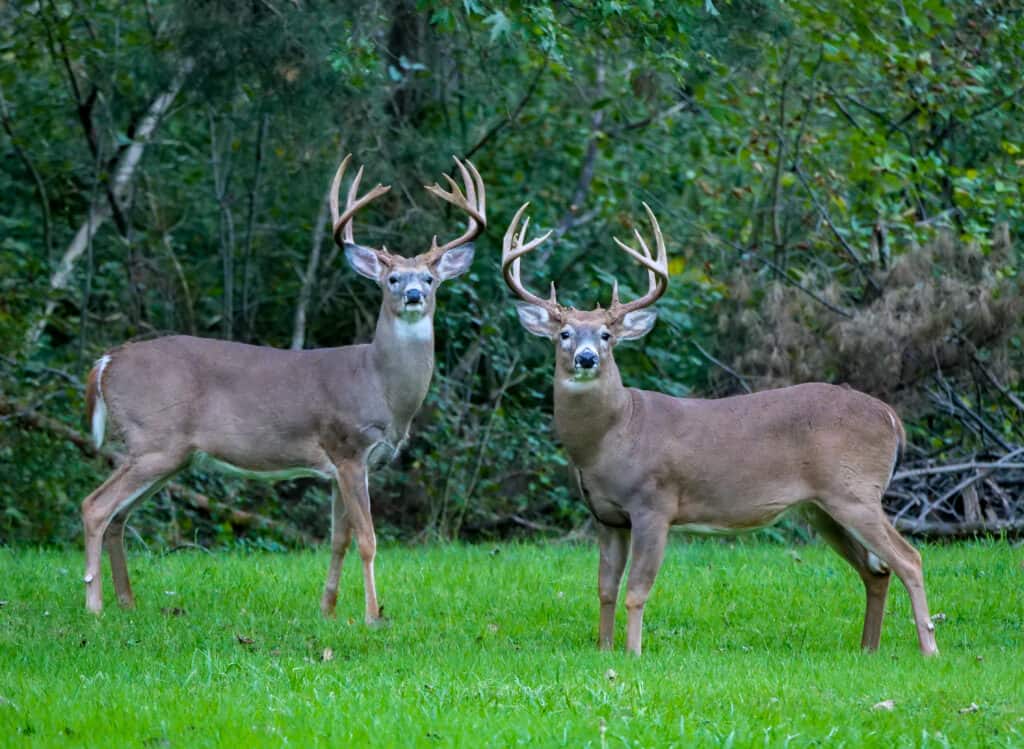
Male white-tailed deer shed their antlers every winter and regrow them in spring.
©iStock.com/Ralph Navarro
White-tailed deer are a medium deer species native to North America and northern South America. Surprisingly, white-tailed deer are excellent swimmers, so they are perfectly suited for the habitat near Louisiana’s tallest waterfall. After nearly going extinct in the early 1900s due to hunting and deforestation, the species is bouncing back tremendously. Conservation efforts have the state’s current population at 500,000. Today, the Louisiana Department of Wildlife and Fisheries supports research and habitat restoration to ensure that a healthy population of deer remains in the state.
Eastern Wild Turkey (Meleagris gallopavo silvestris)

The eastern wild turkey (
Meleagris gallopavo silvestris) is a subspecies of the wild turkey (
Meleagris gallopavo).
©iStock.com/Robert Winkler
Eastern wild turkeys are the largest game bird in Louisiana. Additionally, these turkeys are the largest of all the wild turkey subspecies. Despite their bulky appearance, turkeys run up to 18 miles per hour and fly up to 50 miles per hour.
The photo featured at the top of this post is © Sasha Craig/Shutterstock.com
Thank you for reading! Have some feedback for us? Contact the AZ Animals editorial team.



